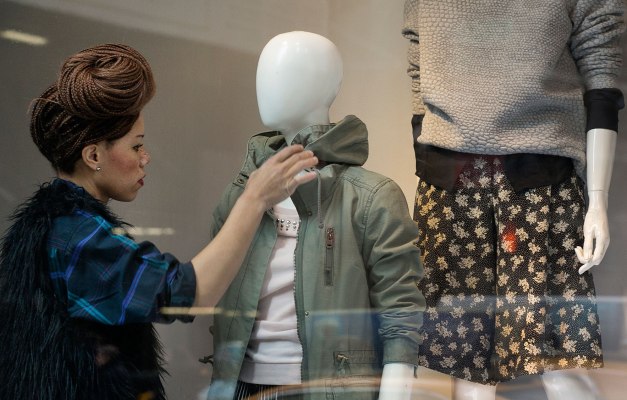Editor’s note: Babs Ryan is a global strategic product innovation consultant using Agile. In her role as principal at ThoughtWorks, she oversees creating differentiating value propositions and products for brands, using lean enterprise continuous delivery for in-market releases in weeks.
In retail, innovation is the name of the game. Increasingly, retailers are staying ahead through unique in-store experiences that inspire shoppers through social lifestyles.
Take a look at STORY, a Manhattan retailer that continually changes everything in store, from products to fittings to events based upon different themes like “Love” or “Made in America.” They are described as a monthly magazine, meets art gallery, meets retailer concept. Taking the in-store experience to a whole new level, IKEA recently hosted a “one-night-only” sleepover for shoppers at its store near Sydney. Rooms that were advertised on Airbnb described in detail themes for individual suites, such as “reminiscent of a Swedish summer cottage.” And Burberry is bringing fun and engaging in-store experiences to the luxury retail scene with digital rainstorms and a digital runway nail bar.
These and many other forward-thinking retailers are changing the way we think about how we tie digital to physical in-store, by morphing product and channel focused “customer experience” to “experiential,” blazing trails using community and entertainment as their primary differentiators.
This is where retail is heading – toward a beautiful fusion of exciting invention and customer-focused retail concepts:
Face-to-Face Interaction
The assumption that digital and mobile self-service will drive sales will shatter starting with Millennials, who are twice as likely as their predecessors to shop with others and avoid isolation. Human interface and interaction across channels will be considered table stakes in the next 10 years. Hated interactive voice response (IVR) menus will disappear when customer service operators, following Zappos’ lead, realize IVR increases attrition and is less profitable than live customer service representatives.
Clunky online chats will move over to Skype-type conversations, where the reps assigned to take shoppers’ calls will be matched by personality, health, life, and career goals and aspirations.
Socially Enriching Experiences All the Rage
To magnify the in-store experience, retailers, airlines, banks, gyms and laundromats will see a surge of even more cafés, bars, living rooms, dance clubs, gaming centers, wellness classes and organic klatches.
In the next 10 years, the real retail winners will be those who move to fit in with those existing social hotspots to enhance the experience, rather than try to become a new hangout. Pop-up shops will continue to pop up and pop down, parking lots will be full of self-drive electric cars, and the concept of “retailtainment” will again be front and center. As Generation Z’s inclination toward shared experiences over possessions endures, the retail industry should be prepared to adjust for these elevated perspectives on value.
What’s more, we will see a stream of urban migration to smaller city apartments by Generation Z, resulting in a rise of “customer closets in the cloud,” inspired by e-retailers like Rent the Runway. H&M and Zara fast fashion will still be a “go-to” retail concept, but “wear-it-once” fashion for single events and occasions will soar in popularity. The rental subscription model will explode and provide consumers with options that go beyond clothing — from event organizers renting wedding gowns and party dresses to furniture retailers renting seasonal furnishings and one-time home entertaining decor.
3-D and Virtual Shopping Will Redefine Instant Gratification
In the next 10 years, in-home 3-D printers will be a staple in most U.S. households, and early 3-D aggregators will siphon market share by providing instant product delivery through direct downloads. From kitchen gadgets to delicious food, 3-D printers will threaten Alibaba to Autozone with instant, custom home delivery of millions of SKUs from anywhere in the world. If a customer loves Joan’s vintage earrings on a rerun of Mad Men, all they will need to do is click a mobile remote control app and quickly purchase the earrings via Apple Pay, PayPal, or another mobile wallet while the 3-D printer starts to buzz.
We are currently seeing early interest in virtual shopping experiences, but by 2025, this technology will become mainstream as Google Glass, Facebook’s Occulus Rift and others that will join the battle to lay claim on the virtual mall. Shoppers will one day have the option to enter a retailer’s interactive brick-and-mortar, or enjoy the convenience of shopping from home by entering immersive virtual stores, attending virtual fashion runway shows, or selecting from their own virtual closets.
In retail today, retailers’ battle cries include “customer-focused,” “customer-engagement” and “omni-channel,” but their hyphenated focus is primarily on operations, channels, delivery, discounts and products — not people. The retailers who will make it big in the next 10 years will be those who innovate and differentiate around people rather than channels. The best of the best, however, will make it a point to entertain, not just “engage,” their customers — after all, share of time equals share of wallet.
The face of retail is constantly changing, and over the next decade retailers will continue to dazzle us with the latest product innovations and in-store experiences. However, our bet is that it will still be all about the customer.
